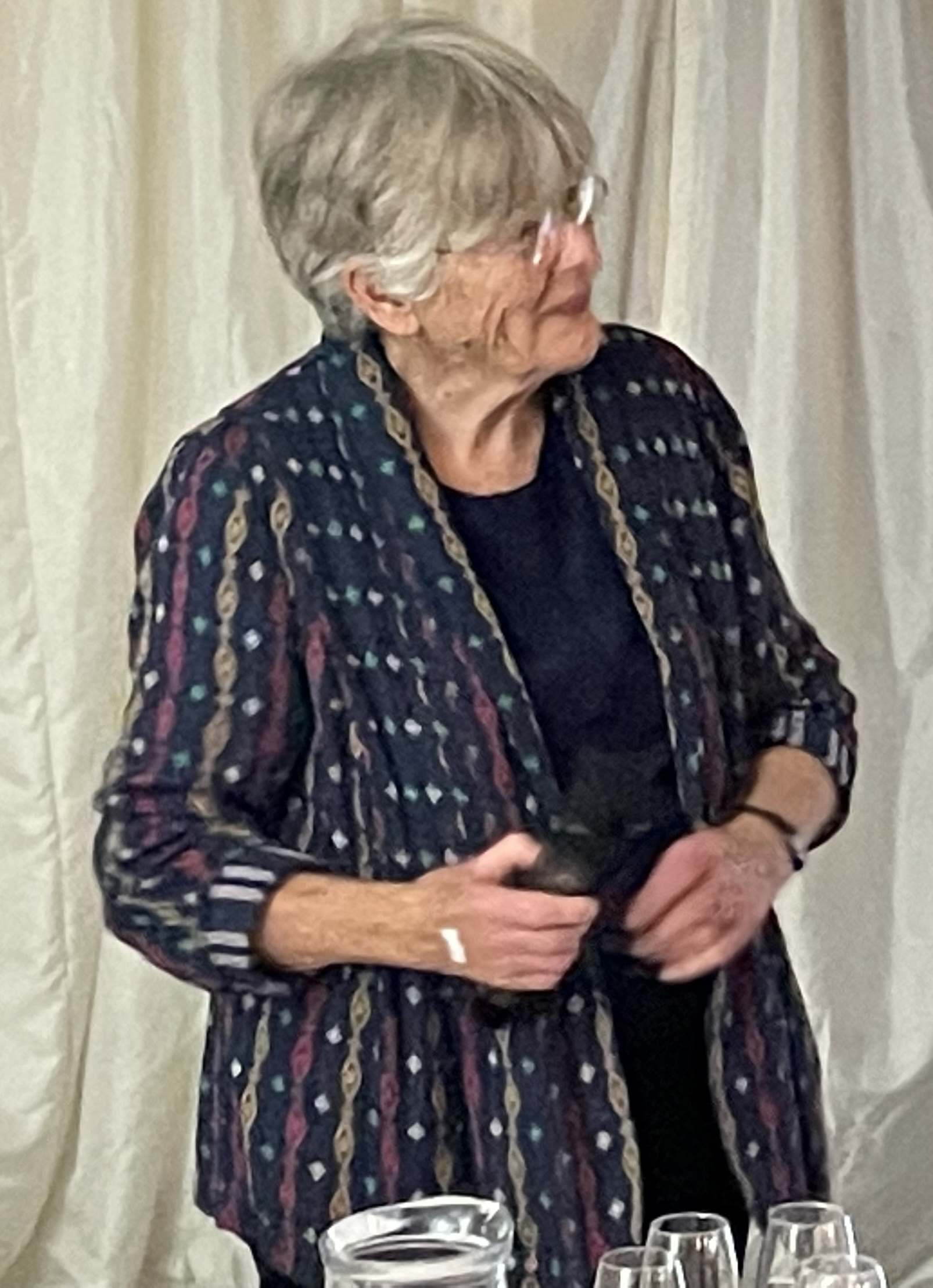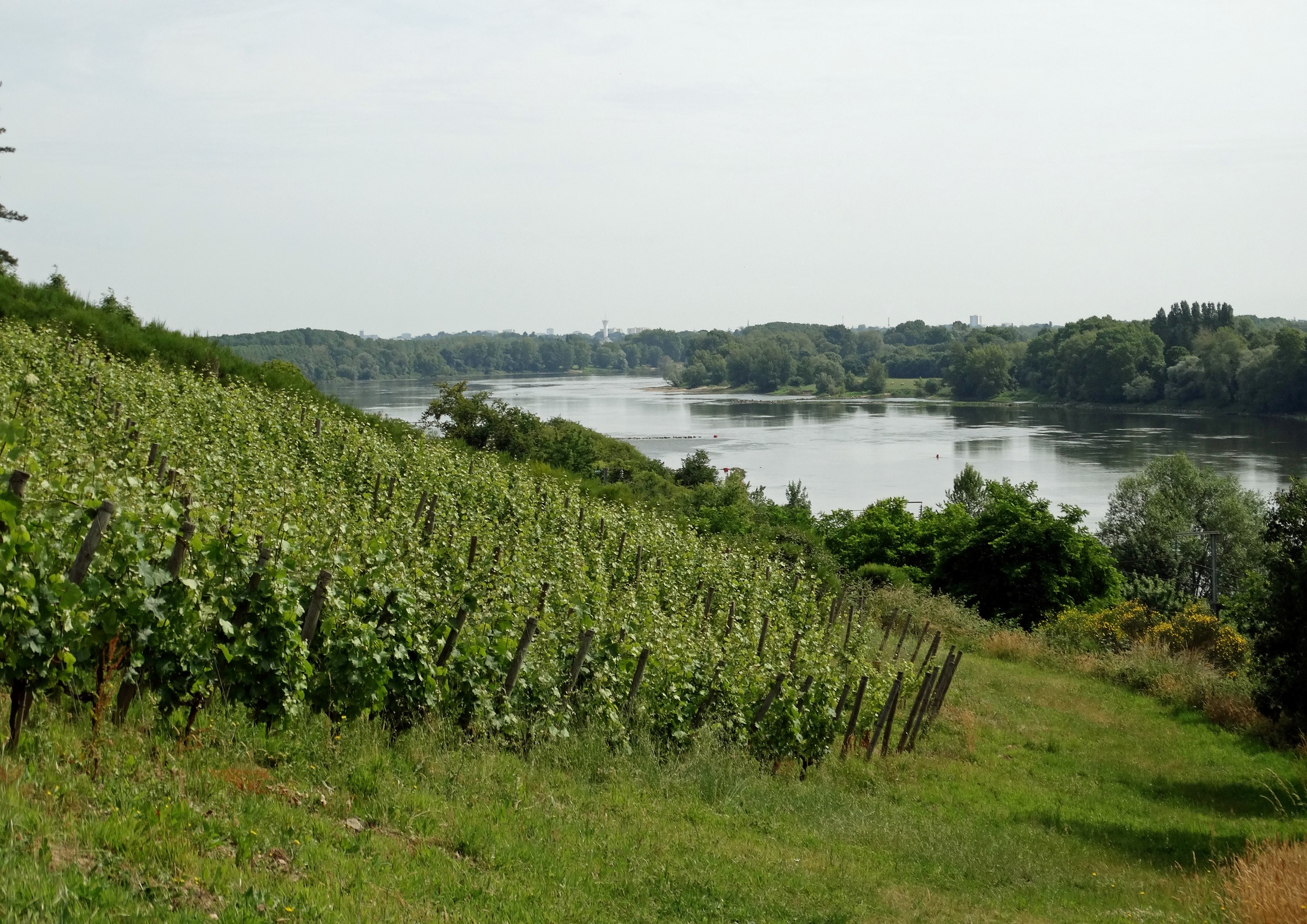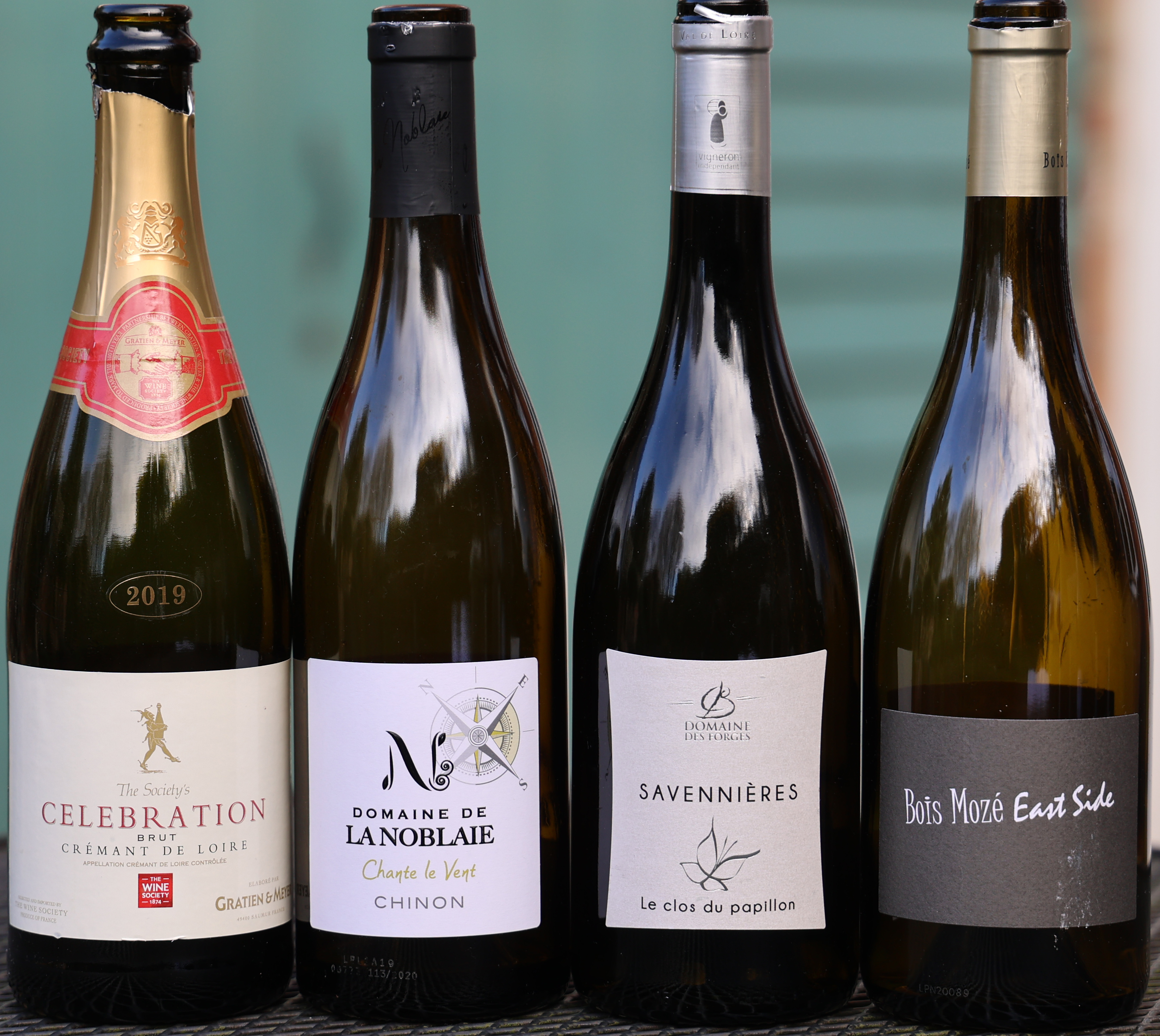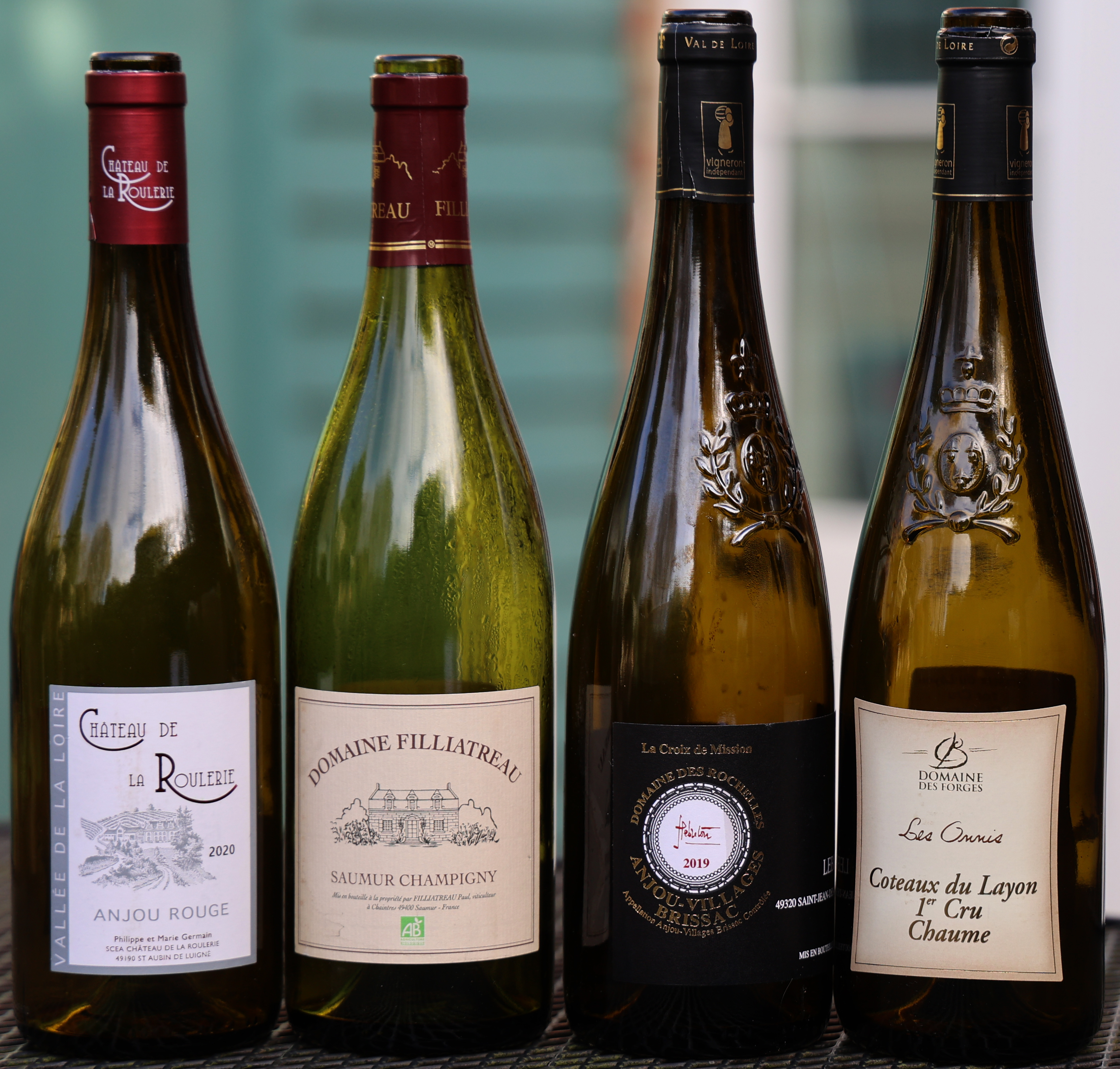
Background
Describing herself as ‘a journalist with no letters after her name’, (a situation the Wine Club has now remedied) Liz Sagues has in fact written extensively on wine for the Independent, the Sunday Express, Country Life and the acclaimed Hampstead & Highgate Express. She has twice been winner of the Louis Roederer Regional Wine Writer of the Year award (2005 and 2011) and is the author of two books about wine – Sussex by the Glass and A Celebration of English Wine as well as a book about Chichester Harbour (England’s Coastal Gem). She is also a member of the Circle of Wine Writers and a former Committee Member of that organisation.
Liz, however, particularly enjoys the wines of the Loire Valley and believes Muscadet and Loire Moelleux are the most underrated wines today and that Chenin Blanc is a grape to cherish.
Introducing the tasting, Liz reminded us that the Loire is France’s third largest wine region and that the Anjou appellation area extends across 128 communes in Maine-et-Loire, 14 in Deux Sèvres and 9 in Vienne. The Anjou regional AOC also includes a number of sub-regional and communal AOCs.
Soils - The appellation area comprises two distinct regions:
Anjou Noir, or ‘Anjou sur Schistes’, the dark, schist based soil of the south-eastern edge of the Massif Armoricain, which is the larger of the areas;
Anjou Blanc, or ‘Anjou sur Tuffeau,’ a smaller area of lighter-coloured soils comprising altered chalk (tufo) at the south western extremity of the Paris Basin.
Production - Average annual production over the last few years has been approximately 70,400 hl. Of which Reds comprised 47,300hl, Whites19,000 hl, and Sparkling wine 4,100 hl.
Primary Grape Varieties - Red: Cabernet Franc, Cabernet Sauvignon,
Pineau d’Aunis and Grolleau (10% maximum) or 100 % Gamay for Anjou Gamay.
White: Chenin (80 % minimum), Sauvignon, Chardonnay
Climate – Generally described as ‘temperate oceanic’, the Loire Valley has not been exempt from the effects of climate change, with the area experiencing extreme variations in temperature over the last few years.
 The Loire Valley has a large number of organics estates – it is estimated that in 2021 around 25% of estates or 18% of the production area were certified organic, with a smaller number (upwards of 2% of the production area) now certified as biodynamic.
The Loire Valley has a large number of organics estates – it is estimated that in 2021 around 25% of estates or 18% of the production area were certified organic, with a smaller number (upwards of 2% of the production area) now certified as biodynamic.
The Tasting

The Wine Society’s Celebration Crémant de Loire 2019 (12.5%) £12.95 was the entry wine, with Liz explaining that sparkling wine does not in her view ‘show’ terroir. Made by Gratien and Meyer, a house founded by Alfred Gratien in 1864, Gratien and Meyer have been supplying the Wine Society since 1906. Based on the outskirts of Saumur, the house has relatively recently started producing its own grapes, rather than buying all of its requirements from local producers. The wine is made from Chardonnay grapes and has a fine mousse, a creamy texture, shows well-ripened grape characteristics (ripe apples, pears), is concentrated and has a fresh finish.
Domaine de la Noblaie Chante le Vent Chinon Blanc 2019 (13.5%) £15.95
Produced further east, on tufa soil and made by a rising star of the region, Jérôme Billard, on the nose and palate the wine is intense, complex and has notes of peaches and apricots. Production of Chenin Blanc is relatively rare in the Chinon area. Usually vinified in stainless steel, in recent years Jérôme has been experimenting with amphoras and working to put more texture into the wine.
Domaine des Forges Savennières Le Clos du Papillon 2020 (14.5%) £19.95
From the Anjou Noir area, the wine is so called because of the butterfly-like shape of the vineyards of the area. Made from 100% Chenin Blanc, the wine provided a contrast with the previous Chenin Blanc grown on tufa soil. The harvest is manual, carried out by two or three successive sortings or at the beginning of botrytization to bring "fat" and fullness to the finished wine. The aromatic character of Chenin is further developed due to careful temperature control during fermentation. Partial malolactic fermentation. Careful aging on the lees with batonnage in 400-litre barrels for about eleven months. The wine has an intense herbal nose with some toasty elements, is ample and round on the palate with good minerality. Bone dry. Should keep for up to 15 years and continue to improve in the bottle.
Bois Mozé East Side IGP 2020 (13%) Not available in the UK but cEuros12.70
Brought back by Liz from the Loire, this is an unusual Pinot Noir, in that the grape is not normally found so far west in the region. The vines are to be found on the slightly sandier soil at the top of the estate. The estate has been working towards organic certification and has a reputation for being highly innovative, with a range that includes for example, a ‘Pet Nat’ wine. Hand harvested and pumped over. With fresh and bright fruit, clean acidity, and light mouth feel, this is ‘Pinot Noir Light’.
 Château de la Roulerie Anjou Rouge 2020 (12.5%) £16.60
Château de la Roulerie Anjou Rouge 2020 (12.5%) £16.60
Located close to Domaine des Forges, the 38 hectare estate is bio-dynamic. This wine is 100% Cabernet Franc. (The grape, apparently, was a favourite of Rabelais.) Hand picked, pumped over and fermented in stainless steel. Aromatic red fruits on the nose with a soft and warming palate full of raspberry and plum flavours.
Filliatreau Saumur-Champigny 2020 (13.5%) £16.50
This 45 hectare estate has recently undergone organic conversion and is aiming for biodynamic status. The soil is clay limestone. Vines are around 35 years old and fermentation is in stainless steel vats. This is the estates flagship wine. The 100% Cabernet Franc wine is intended to be drunk young. Light, sweet red fruits with hints of strawberries and raspberries. Good balancing acidity.
Domaine des Rochelles La Croix de la Mission Anjou Villages Brissac 2019 (13.5%) £14.95
Made from 90% Cabernet Sauvignon and 10 % Cabernet Franc. The average age of the vines is 25 years, grown on south facing slopes on what is described as ‘red schist’. Matured in stainless steel tanks (no oak is used for this wine). Rich ruby in colour, with a generous nose and palate of somewhat candied red and black fruits. Would benefit from decanting. Will age for up to 10 years.
Domaine des Forges Chaume 1er Cru Les Onnis 2019 (12%) £24
From a single vineyard. 100% Chenin Blanc, this wine has 160g of residual sugar. The evident acidity will help with the ageing process. Pale golden in colour with an intense nose with hints of marmalade and ginger. Rich but not cloying. The vineyard is considered one of the finest in the Coteaux du Layon appelation.
HRE 5.12.22